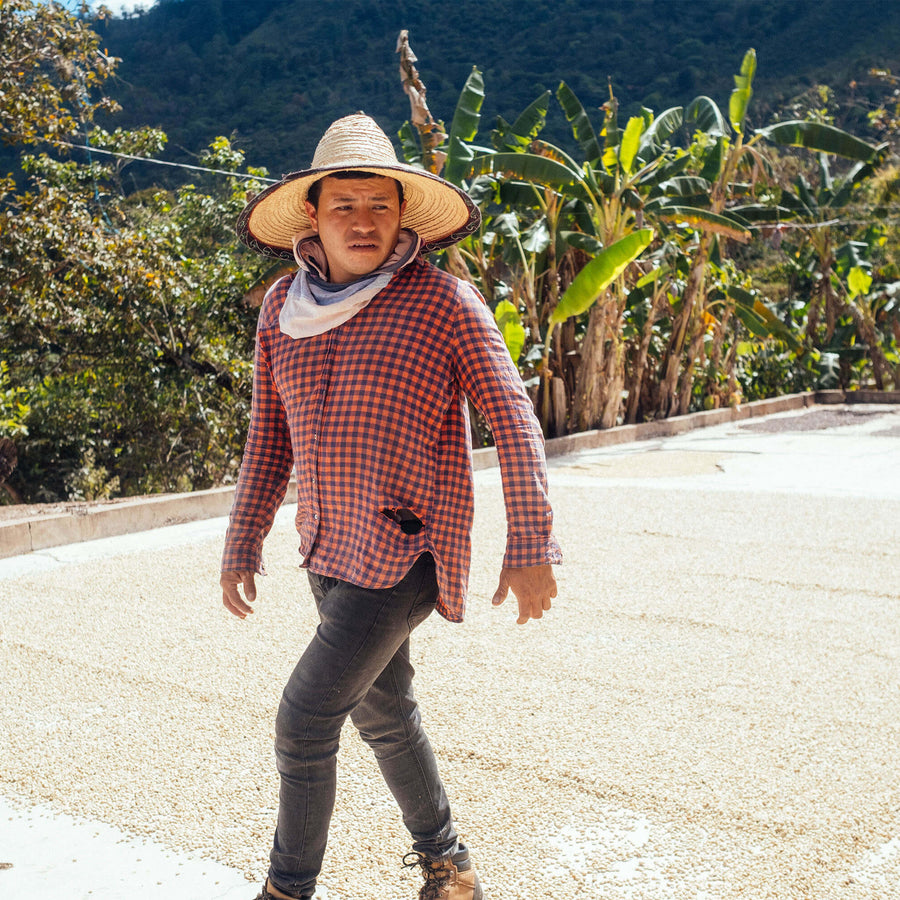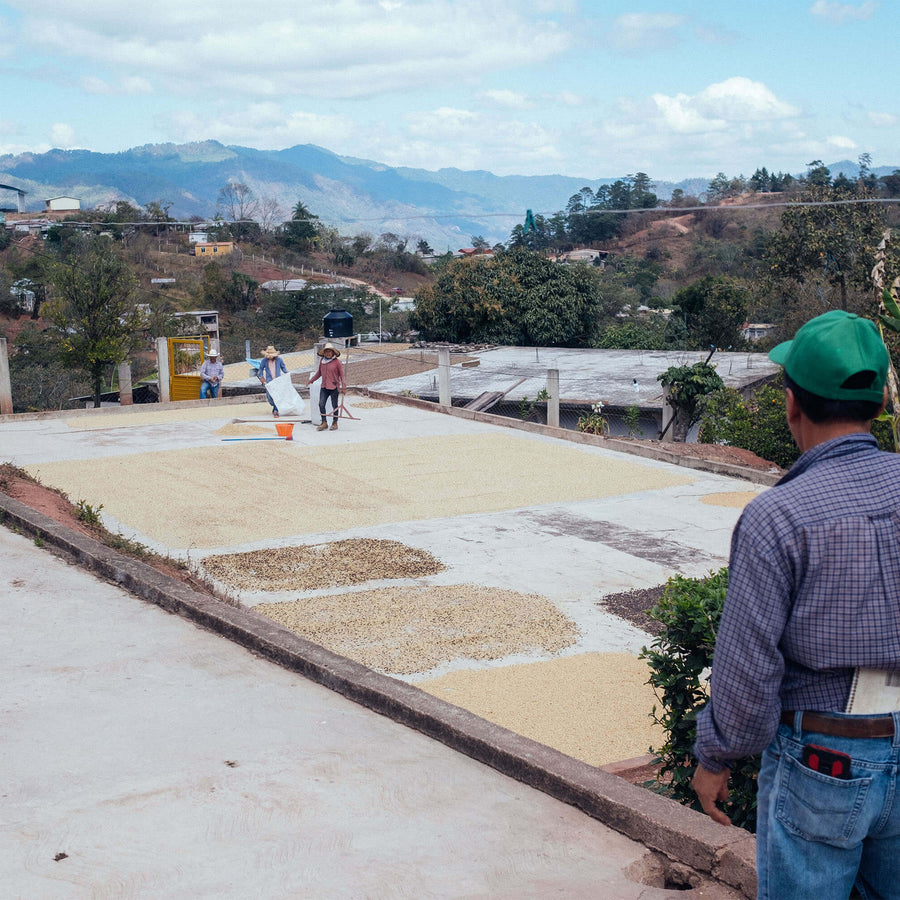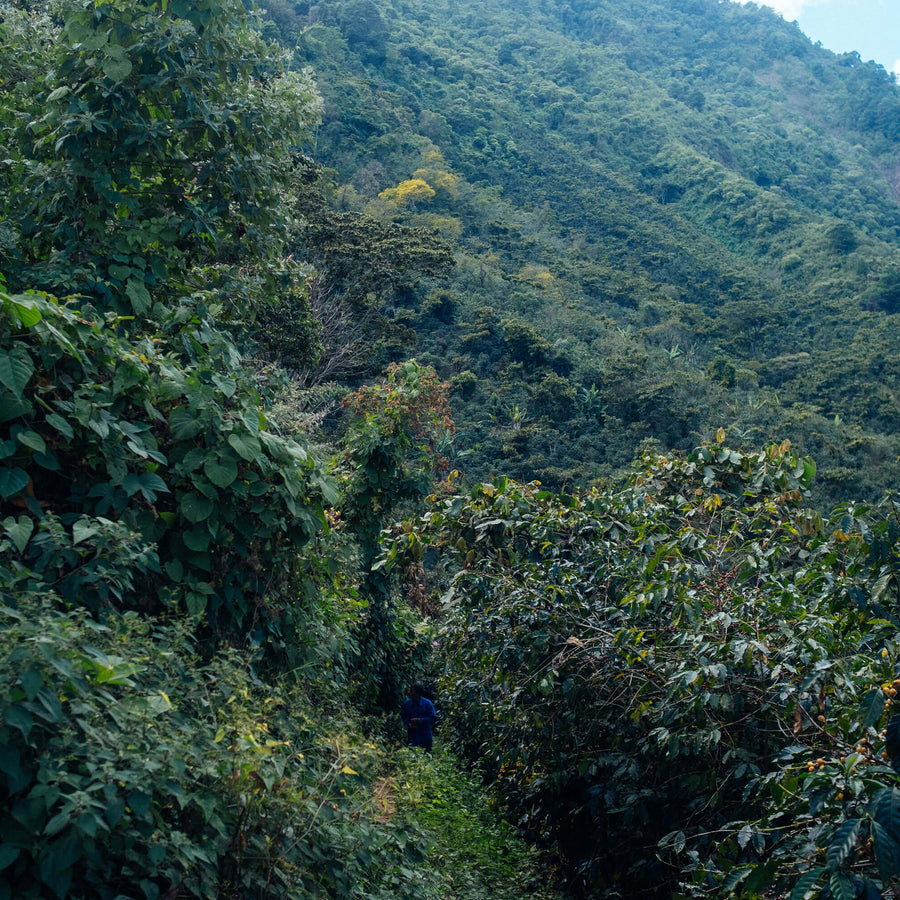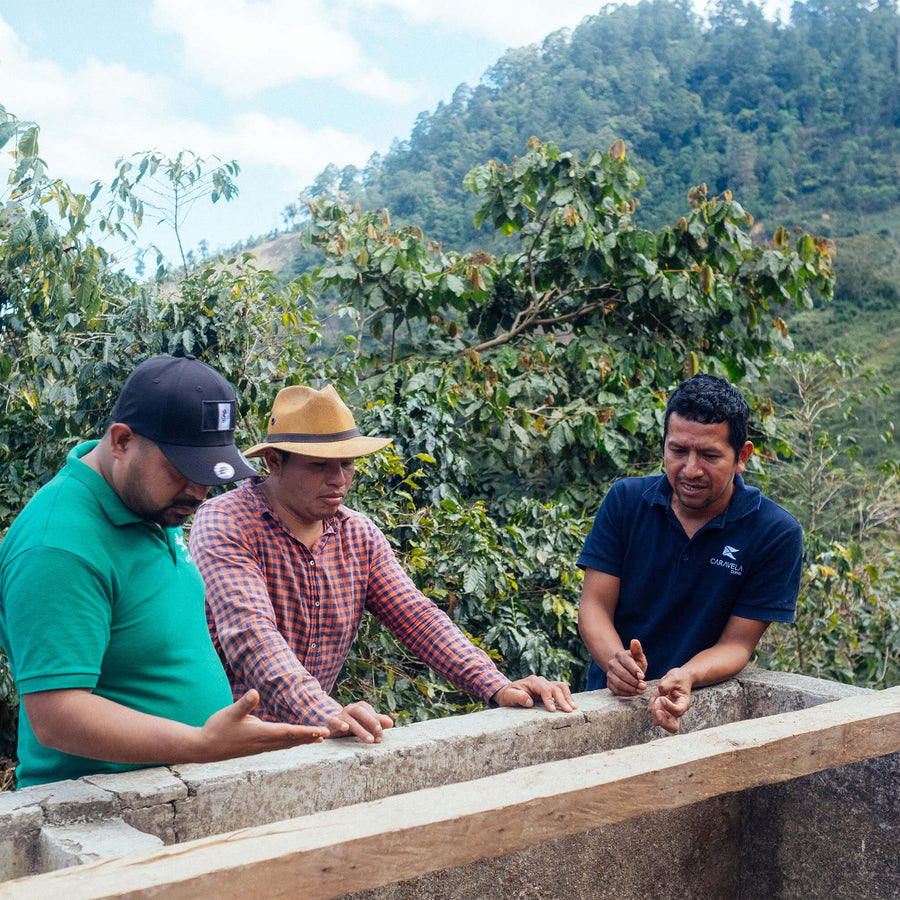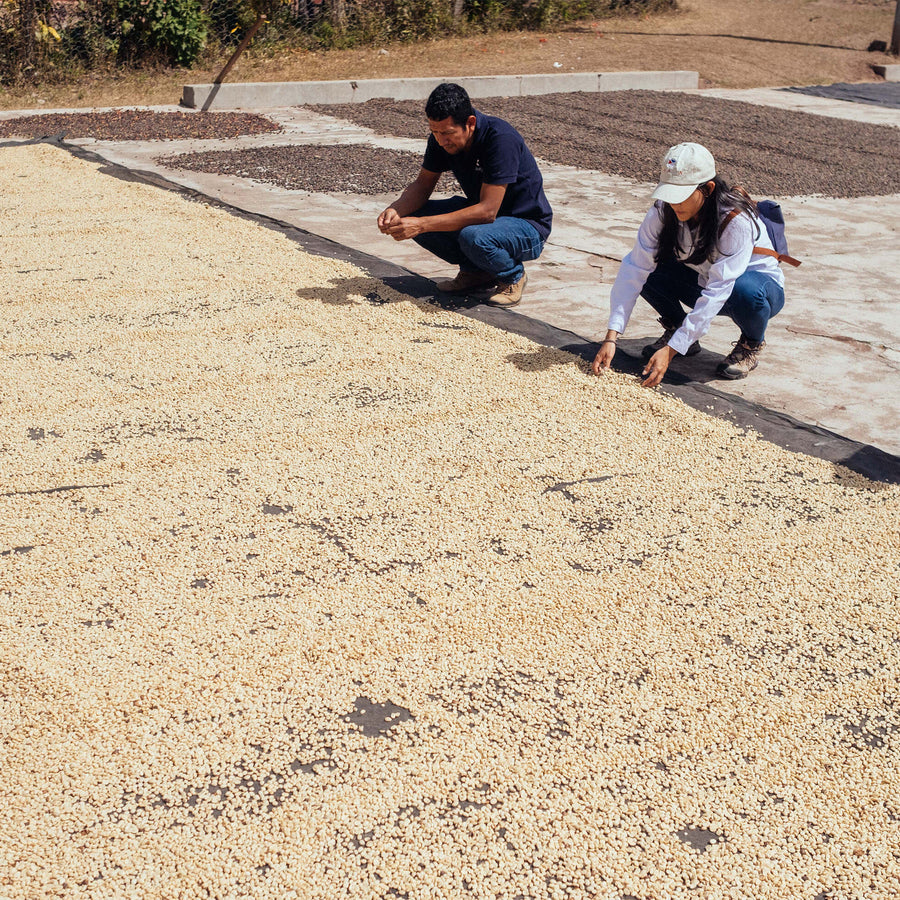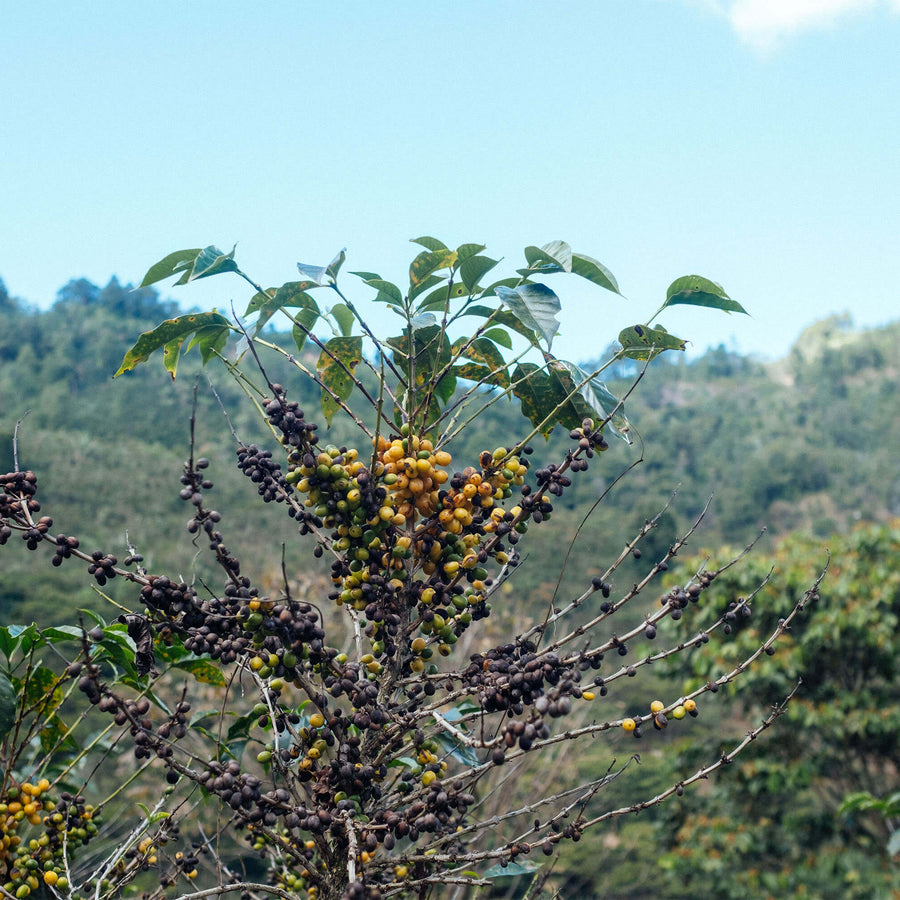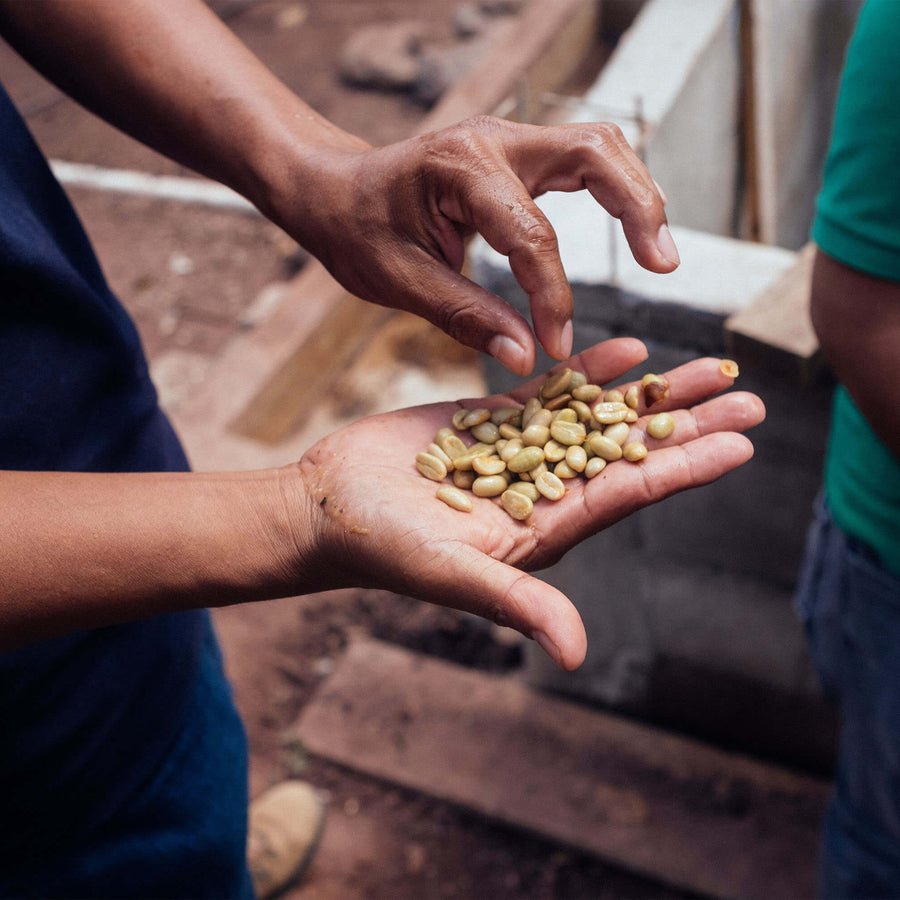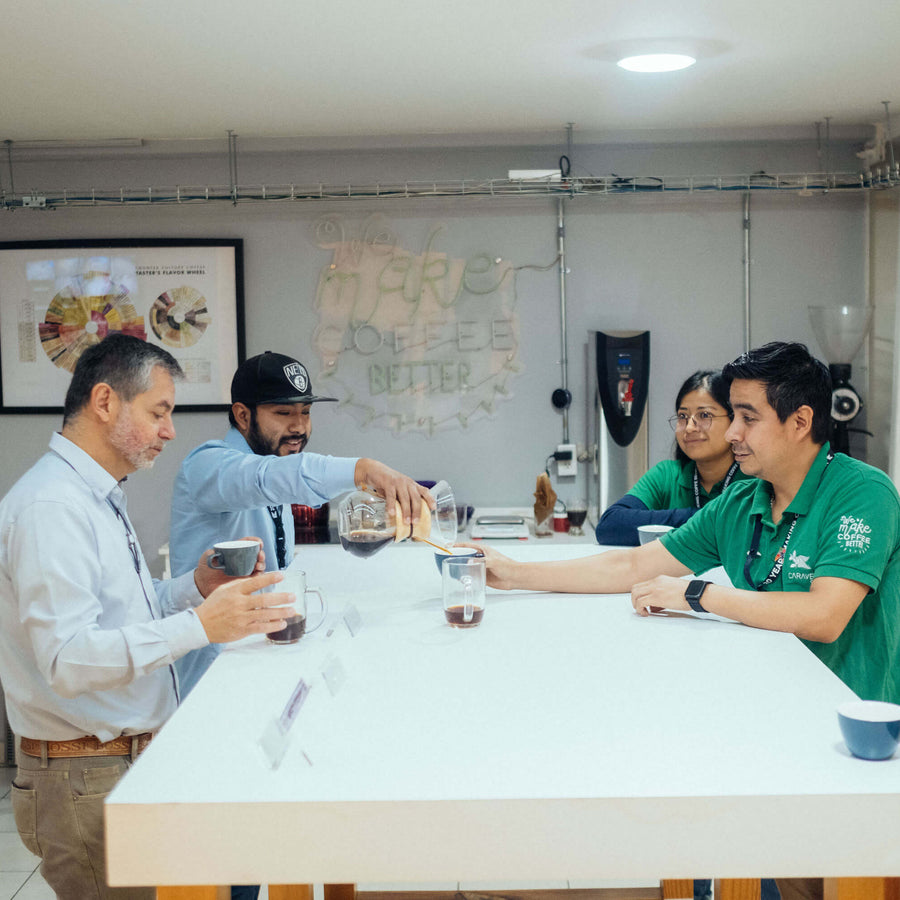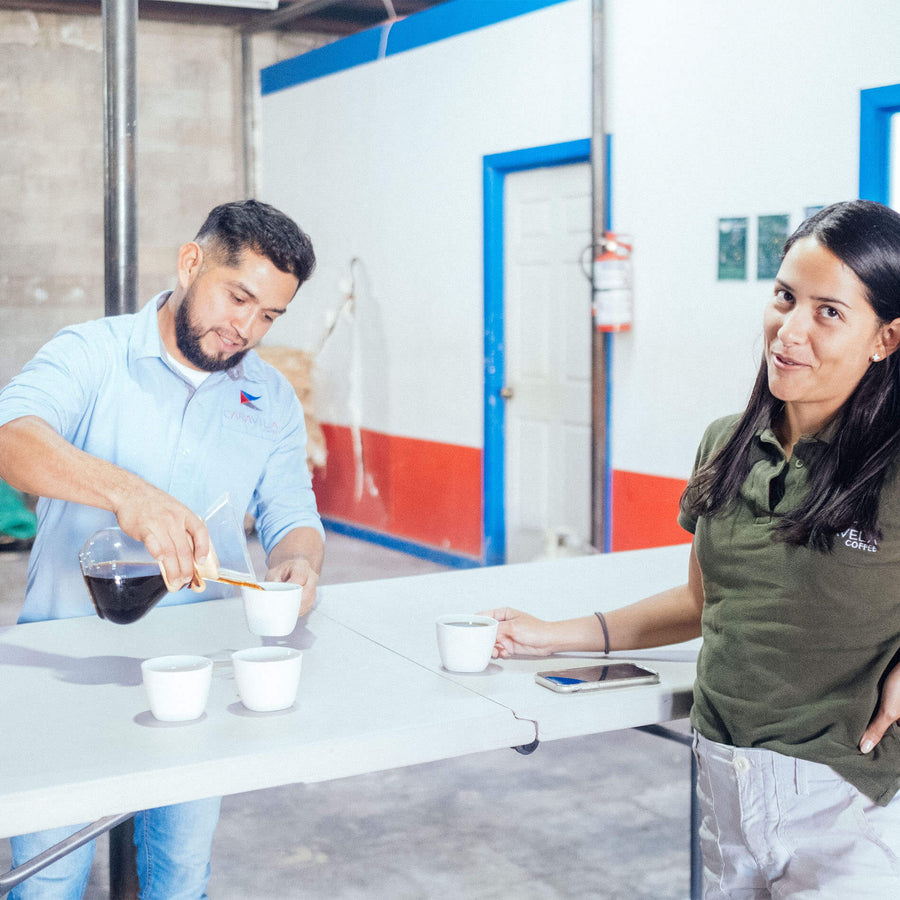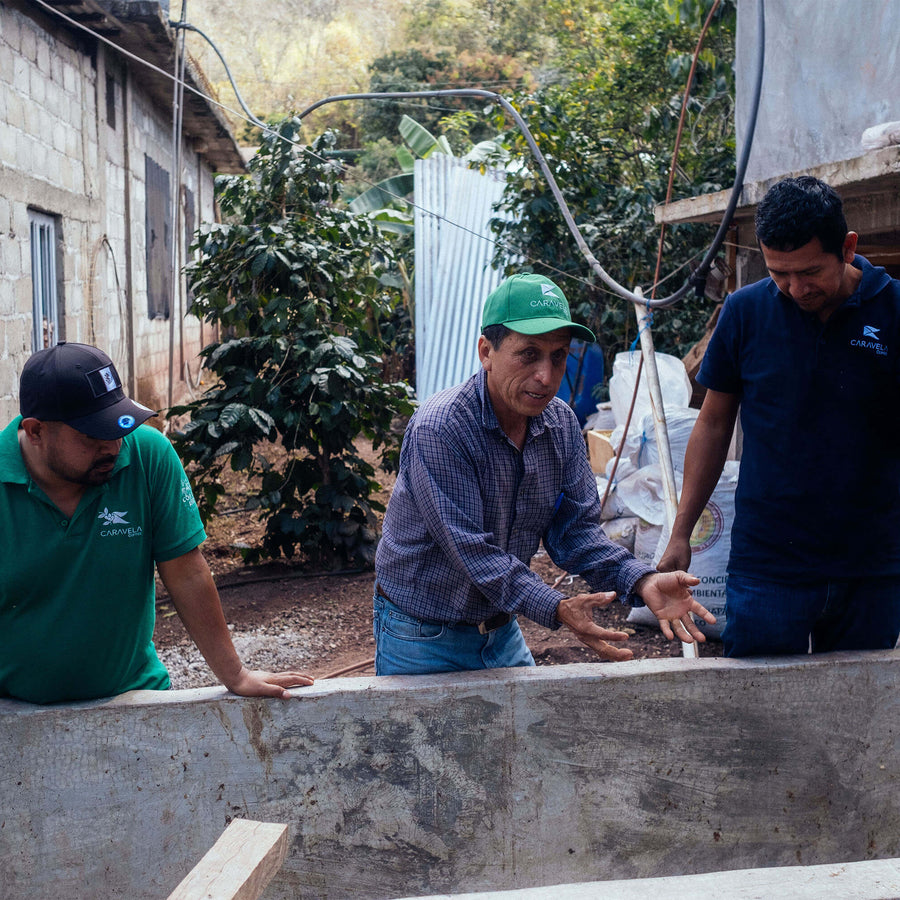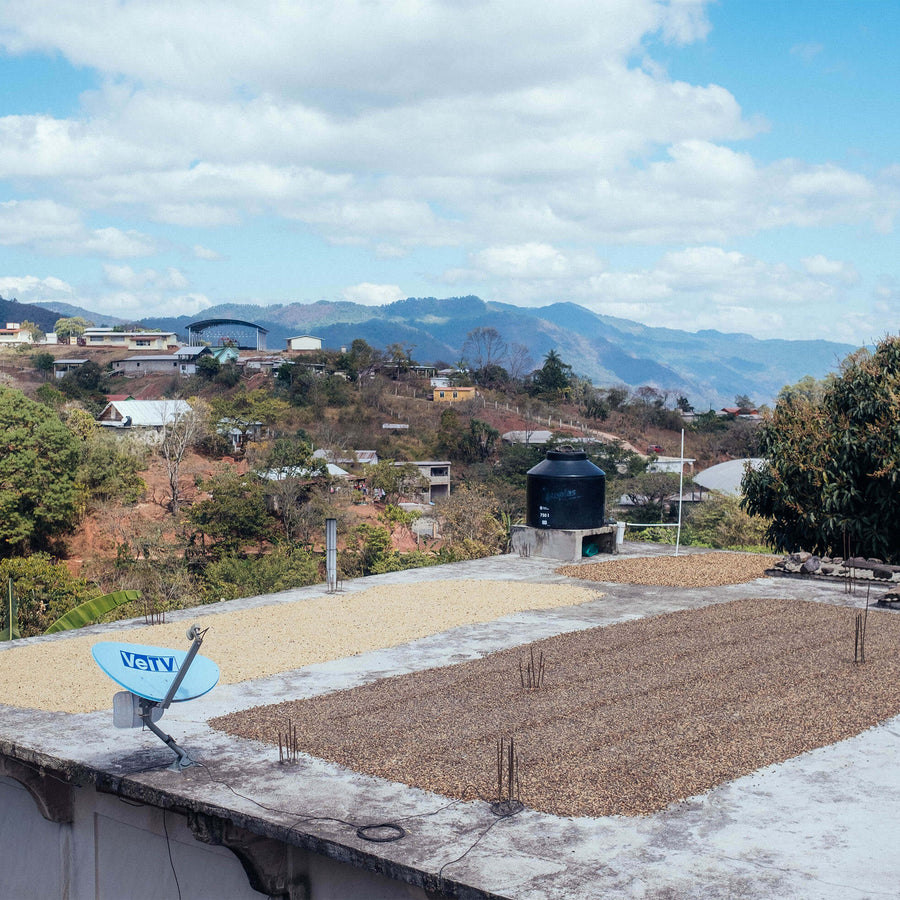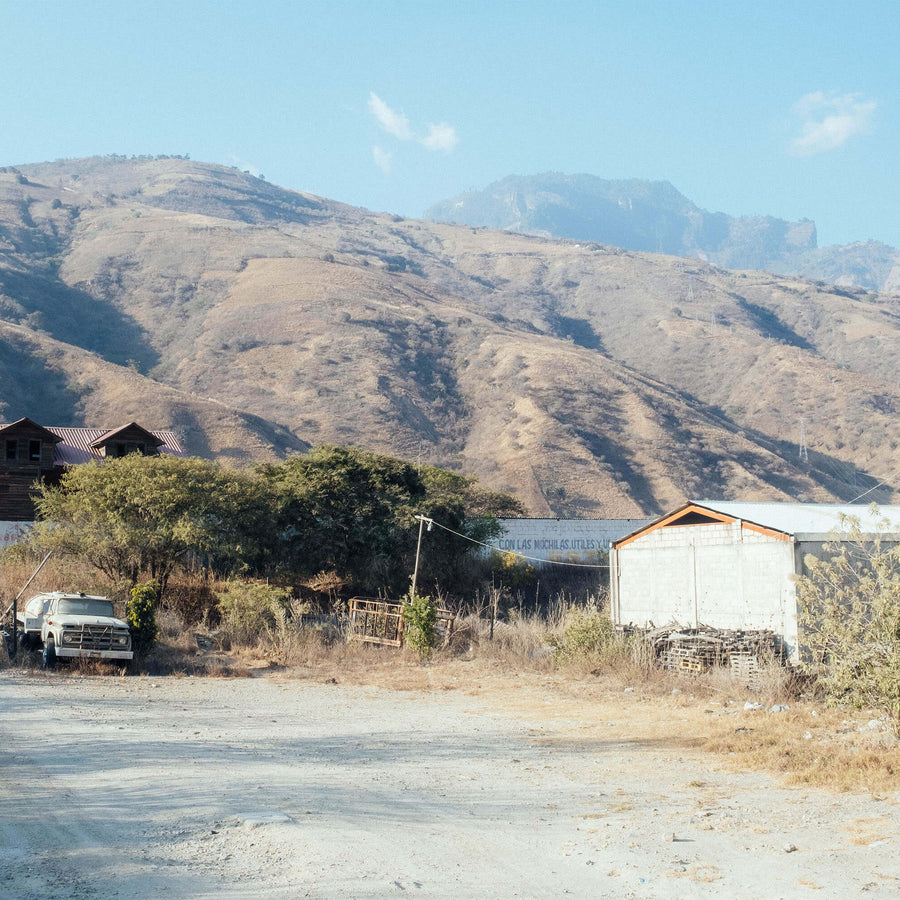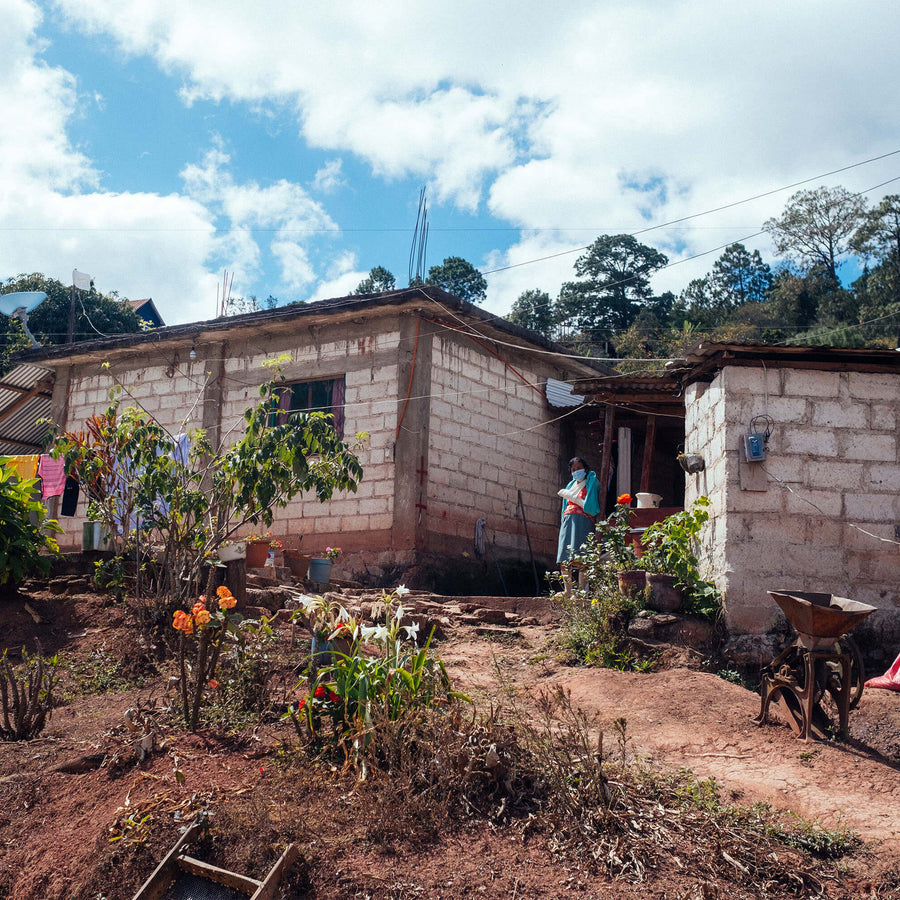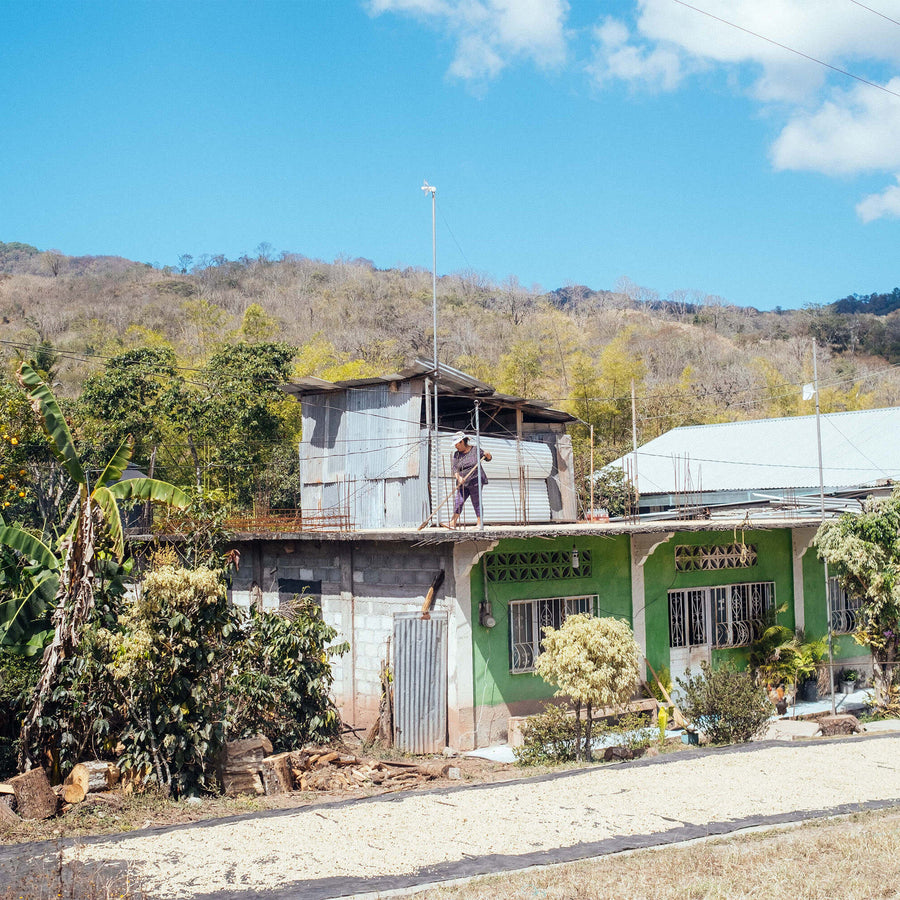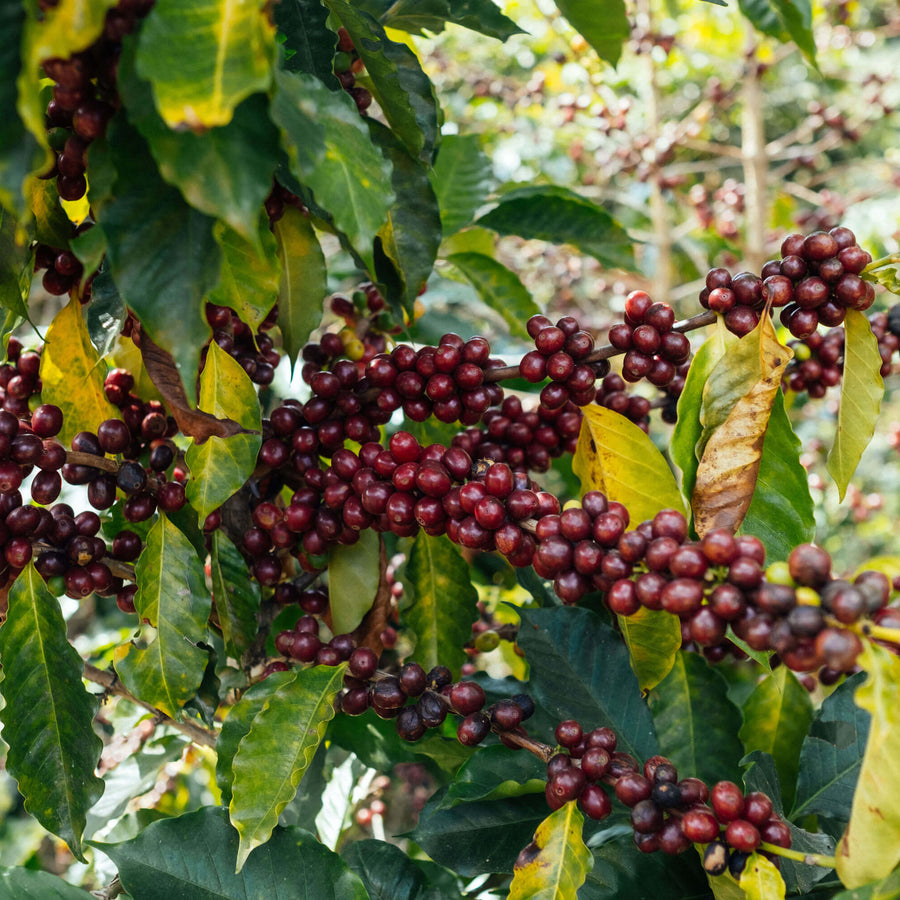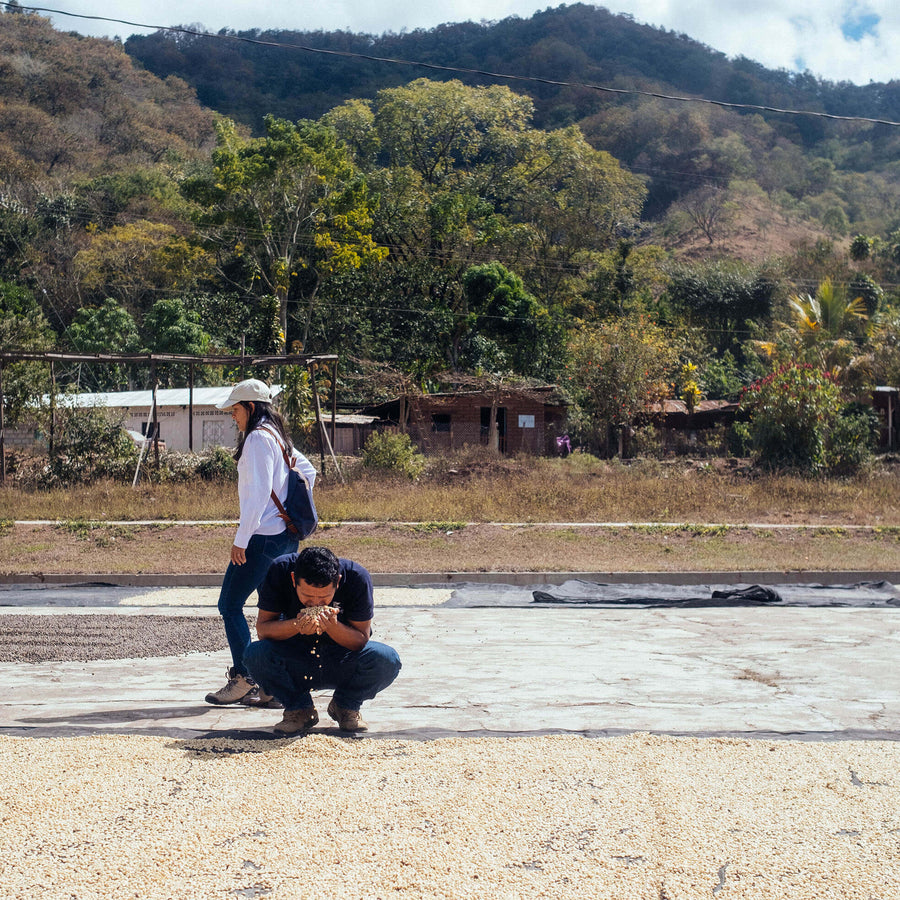Our previous experience with Mexico was limited to what we’d seen on TV: dusty deserts, tumbleweeds, and the occasional cartel drama. So, when we touched down in Tapachula, in the southernmost part of Mexico, it felt like stepping into a whole new world. This region, bordering Guatemala and cradled by the Sierra Madre de Chiapas mountains, is lush, green, and absolutely teeming with life. It’s here, amidst the clouds and coffee trees, that the incredible producers behind Los Milagros are making their mark.
We were welcomed by Marisabel and Edy, two of the many passionate individuals we had the pleasure of meeting. Mari, with her infectious smile and boundless energy, handles marketing, effortlessly bridging the gap between farmers and the global coffee community. Edy, the towering head of the PECA team, is a master agronomist who, along with his team, works tirelessly to help producers achieve their best possible harvests.
Our journey took us along winding mountain roads into the Motozintla valley, where we met Ramiro, the warehouse manager. Quiet and unassuming until you get him cupping coffee – then he transforms into an authority on the subject, demonstrating his expertise with every slurp. We tasted a table filled with single lots from the region, each contributing to the Los Milagros coffee we feature at Commonfolk. The care and dedication put into every cup was evident.
Later, we visited Daniel, a young producer committed to perfecting his craft. His home is more of a coffee farm than a house, with every available surface covered in drying beans. Edy demonstrated a technique for checking fermentation, using a wooden rod to gauge the coffee’s readiness. It was a fascinating glimpse into the depth of knowledge and attention to detail that goes into producing these exceptional coffees.
From the high altitudes of Siltepec to the bustling streets of Mexico City and finally to the sprawling Caravela site in Oaxaca, the trip was a revelation. We met Fernando, a softly spoken Colombian who’s been with Caravela since day one. His quiet expertise and passion for quality shone through during the cupping session that followed. Mexico, with its diverse landscapes and dedicated producers, shattered all our preconceptions. It’s a country brimming with potential and a true contender in the world of speciality coffee.
 Cart
Cart
